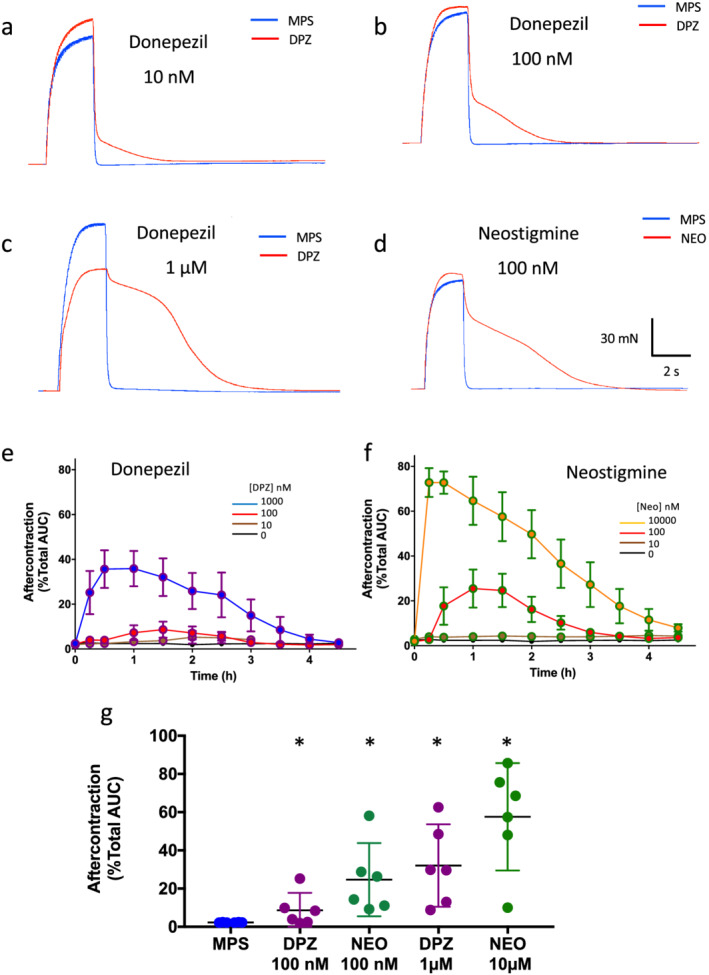FIGURE 2.

Donepezil prolongs tetanic muscle force. (a–c) Isometric tension recordings from isolated flexor digitorum brevis (FDB) muscles during repetitive stimulation of the tibial nerve supply for 2 s at 20 Hz. Each panel shows the tension response in mammalian physiological saline (MPS) and 1–1.5 h after adding donepezil (DPZ) at the concentrations indicated. In control solution, tetanic muscle responses relaxed promptly at the end of the stimulus train but relaxation was progressively delayed (‘aftercontraction’) after adding donepezil. (d) Neostigmine (NEO; 100 nM), a carbamate anti‐AChE, had similar effects on relaxation of muscle tetani evoked by tibial nerve stimulation. (e, f) Time course of development and decay of aftercontractions after adding donepezil (e) or neostigmine (f) at the range of concentrations indicated, expressed as a percentage of the total area under the curve (AUC) during and after tetanic stimulation. Each point represents the mean ± SEM of recordings from 5 to 6 mice. The lowest to highest lines represent data in MPS (0), 10 nM, 100 nM and 1 μM donepezil (e), or MPS, 10 nM, 100 nM and 10 μM neostigmine (f). (g) Data summarising fractional AUC measurements for aftercontractions recorded 1 h after adding either donepezil or neostigmine at the concentrations indicated. Each point represents data from one nerve‐muscle preparation (N = 5–6 mice). Bars indicate mean ± 95% confidence intervals. *P < 0.05, significantly different from MPS; paired Wilcoxon test.
